
All Together Now: DSP Goes Net-Centric
The move towards centralised DSPs seems inevitable as more of the content goes on the network. But at what cost?
Text:/ Derek Powell
Let’s face it – DSPs are useful devices in meeting rooms, classrooms, lecture theatres, auditoria, in fact anywhere where there is a sound system and a control system. AV Control systems, either with a touchscreen or a button panel, empower users to take command of a room without having a detailed knowledge of the AV system. DSPs allow us to replace what might otherwise be a complex mixer with a simple touchscreen slider or volume up/down buttons — something that anyone can cope with.
There are, though, a couple of disadvantages. Typically, they will add a couple of grand to the cost, which while good value for a reasonably complex room, starts to get expensive for a simple system that only needs to provide volume control for one or two audio sources. Secondly, it means we need a central rack to mount the device, something increasingly difficult to provide in many modern, minimalist spaces. Thirdly, you can get caught short, running out of inputs and outputs when a relatively simple room suddenly needs an upgrade to add videoconferencing, recording, or live streaming.
These issues became more apparent when two other trends in AV design came to the fore. The first was the rise of AV over IP, where both video and audio signals could be carried easily over the network, and could be accessed in adjacent rooms as easily as at the rack. The second trend was towards centralised AV control systems, as we discussed extensively in this magazine last year.
If you have a number of rooms close together, such as in an office building, a classroom block, or a university campus, it can be more cost effective to have just one (or two) central control processors with each room having a touch panel and all the edge devices connected via the network. Once you centralise control systems, the cost drops, software upgrades turn out to be trivial and it becomes very easy to add extra devices to upgrade rooms.
The funda mental thesis is simple and all the advantages of centralised control also apply to centralised audio design. So with that background, and after thoroughly canvassing centralised control last year, we will begin our discussion of Centralised Audio Design.
Three questions come up continuously in any discussion of centralised infrastructure. What sort of projects does it suit? Does it cost more? What if the central box fails? We put those questions and more to a panel of industry experts.
THE QSC APPROACH
It all started with Peak Audio’s CobraNet. The team subsequently moved to QSC and was tasked with developing a new platform to help shape the convergence of AV and IT — Q-SYS.
Andy Pearce (QSC Director of Systems Sales, APAC): “Q-SYS was quite different to anything on the market because it used standard Intel-based processing. We’d worked out how to have a Linux operating system with the spare processors on the Intel platform used as a DSP processing engine. From the very start, it was designed to be an integrated platform for audio, video, control and monitoring, and the development of Q-SYS has been a relentless pursuit toward that goal of providing the industry a complete ecosystem approach”.
Q-SYS is grounded in standard IT networking protocols allowing Q-SYS to run on off-the-shelf network hardware over standard Gigabit Ethernet. As well as finding a home on the network, any DSP infrastructure needs to interface with other parts of the audio ecosystem and Andy is keen to emphasise QSC’s credentials here. “Q-SYS is a fully agnostic ecosystem,” he stated. “We interface with Dante, CobraNet and even AVB.”
The watchword today for interoperability is AES67, so the question of Q-SYS support for this is important. “Q-SYS natively supports AES67 and does not require the user to buy additional hardware or additional licenses like competitive solutions. When you buy a Q-SYS Core processor, you can divide the channels between Q-LAN and AES67.”
Andy Pearce sees the discussion of cost in centralised audio infrastructure in a different light: “I think people are now costing our AV systems in a similar way to IT systems. Your IT manager is far more used to saying: ‘Well I have a mail server and then I buy license packs for how many users I want’. You have to consider the customer’s financial model, taking into account both the capital expenditure and operational expenditure.
“Similarly, you need to consider the installation needs when deciding on a hybrid or centralised system,” Andy pointed out. “A hybrid can be ideal when you want to take advantage of centralised audio, video and control processing along with remote monitoring and management, but need a dedicated system in mission-critical rooms like the executive boardroom. Regardless, Q-SYS offers full redundancy of nearly every Q-SYS component and the AV network, offering a far more robust system.”
THE EVANGELIST: DEAN MCFADDEN
Dean McFadden has spent his life learning by experience. He lives by this credo and even made Learning by Experience the name of his audiovisual consulting business. Starting as an apprentice radio technician in the RAAF he then built a solid background in the audiovisual industry as a roadie. He next moved into consultancy and followed that with a five-year stint as a Technical Architect for a major university in Melbourne. While there, he implemented an audiovisual design and strategy that was one of the first examples of centralised control, video and audio on the network. He also became Australia’s best known guru on the subject of AV over IP.
As expected, he has well developed ideas about the value of centralised DSP and who was scoring runs in that area.
“We’re seeing a big push for content on the network,” Dean declared. “For any organisation adopting that technology, centralised control is almost mandatory to finish the design. It doesn’t make sense to come up with a net-centric design for your control and transport of video on the network and then have to bolt a DSP in the room and use analogue signals. That goes against what you’re trying to achieve. So it’s critical you go to a centrally deployable and manageable audio solution.”
Dean is positive the big advantages from centralised deployment flow from taking a big-picture view. “Is putting a DSP in every comms cupboard on every floor centrally deploying or is that still distributed?” he asks. “I mean you’re consolidating a little bit but what you want to do is take a whole building or even a campus-worth of audio and centrally deploy the resources to manage that.”
Dean’s first major university project involved considering that big picture. “We did an end state design that would allow for 3500 video sources and 2500 destinations with 4000 channels of discrete audio,” he recalled. “The network design part was about three months of the process. We engaged external consultants to help us with the multicast design because no one in the team had ever had any experience of that amount of multicast across an enterprise network. Looking back, there were no white papers or benchmark sites to review, so we had to blaze a path. It’s a lot simpler today because what was achieved there is now common knowledge. The manufacturers are a lot more aware of what needs to be done and the guys at QSC have been part of that journey. So it’s an evolving industry and we’re getting better but we’ve got to start looking at it from an IT not an AV viewpoint.”
“At the moment QSC seem to be ticking all the boxes. There are other products on the market but QSC seem to have approached things from a more IT-centric point of view with the Q-SYS ecosystem rather than as an audio company trying to incorporate a net-centric approach.”
In Dean’s view, a centralised DSP system has to work as a Layer 3 (routable) component on the network. “In the rush to get everything on the network,” he explained, “you hear these statements like: ‘You just plug it in and it works – just enable IGMP snooping and querying and it just works’. That’s fine if you’ve got a Layer 2 solution, which is a switch sitting in a room and you just plug in all the gear into it. But when you get on to the Enterprise network it’s all about Layer 3 and the Q-SYS ecosystem operates on Layer 3.”
When asked about potential failures in a centralised system, Dean is direct: “If a DSP in a room fails, you upset 30 people. It’s no big deal – you’d get by for the time it took to replace. Now we’re now talking tens of rooms hanging on a single piece of hardware. If it fails, yes there’s a larger impact to the business. The Net-centric approach that Q-SYS has taken is you can run them as a fully redundant solution. If one core fails it automatically switches over to a second one. Depending on how you deployed it, you may have a drop of audio for three to five seconds while everything renegotiates but that’s more than acceptable in a teaching space or meeting room. People cough and miss parts of conversation for longer than that. That part’s covered.”
THE BIAMP APPROACH
Thousands of standalone Biamp DSPs are at work in Australia, powering university teaching spaces, corporate spaces, courtrooms, transport hubs and more. While Biamp’s approach to DSP systems is resolutely based on its own hardware (everything is built in-house in Oregon), it is one of the industry pioneers in embracing audio transport over the network. Biamp now offers both video and audio DSP on its Tesira platform, interfacing easily with AVB and several other protocols including Dante.
Jim Seretis (Biamp Systems BDM and consultant liaison) explained that Biamp has been promoting centralised DSP systems for some time: “A few years ago, we brought out a concept called ‘partitions’, where we can segregate the DSP power/usage within one processor,” he said, noting that there were other distinctive enabling features in Biamp’s underlying architecture. “If you have a Tesira design — with multiple DSPs, multiple in and out boxes, multiple microphone arrays and so on — then once you compile, the software always sees it as a system, not as individual devices you connect. It automatically allocates DSP resources, sets up all your networking (routed lines or channels if you prefer), assigns dynamic delay EQ groups, and even provides a list of equipment needed to implement the system design.”
Jim explained that in addition to the familiar fixed I/O DSPs such as TesiraForté, Tesira also has configurable DSPs that support made-to-order modular configurations. “It allows you to add inputs and output cards as needed, VoIP and telephony too, but you can include multiple DSP cards in the chassis as well. So, it is literally a frame. And we also support full fail-over and redundancy for mission-critical systems on Tesira Server chassis with the flexibility to drop in up to 8 x DSP cards for large centralised, partitioned systems.”
AV networking is handled using your choice of protocols. “Our Server-IO device is unique in the industry in that it can support AVB, CobraNet, and Dante simultaneously.
You can identify any clock as the master or slave. If you want both Dante and AVB, they will not fight each other. We allow you to utilise whichever protocol you want.”
Importantly, Biamp has targeted a mid-March firmware upgrade for Tesira to enable AES67 compatibility.
Jim cites a number of recent projects that use centralised Biamp DSPs. “We installed the West Australian Industrial Relations Courts in Perth and also DoTAG – the Attorney-General’s Department in Perth – as centralised systems. Also a large commercial Barangaroo fitout, which a Fredon job,” he said.
Jim is quick to point out Biamp’s advantages as a single platform for both video and audio. “It’s always a challenge when you have two different brands or platforms together and try to make them talk,” he observed. “A lot of people I speak to have had challenges when they try to put [two platforms together] even when they use AES67 as the bridge. You still have the latency and lip-sync issues that you need to solve. AVB provides the basis for automated lip sync in Tesira. We guarantee that regardless of whether the audio is analogue or digital, or even if the audio and video come from separate sources, you can embed and de-embed the two streams at will, process them together or separately, doesn’t matter, and the streams will arrive at their outputs in sync. No one else can guarantee that,” he claimed.
THE INTEGRATOR: NICK ORSATTI (FREDON TECHNOLOGY)
With more than two decades experience in top level audiovisual integration companies, Nick has been around the block with DSPs more times than he can count. He’s seen the application of central audio processing infrastructure in everything from large stadium projects to campuses of all kinds in the corporate, government and education sectors.
“A classic use case is an airport,” he noted. “I have a user requirement to page to a single gate, as well as to a whole wing of a terminal, and then across the wider facility. Centralising the DSP makes sense in that traditional commercial use case.”
But he doesn’t see a central audio infrastructure meeting all needs. “We’ve done a lot of fitouts in large corporate environments and in spaces where people work at desk; where you have a lot of smaller, simpler meeting spaces; DSP is typically not centralised. But in the dedicated client areas and high-density areas where they have more formalised meetings, there’s a strong desire for it. That’s for a couple of reasons: 1. is about efficiency and value. The second one is more around meeting the use cases. Where they choose to centralise and share expensive infrastructure such as videoconferencing, then it makes sense to deal with the audio in a similar fashion. And often, even on client floors, there will be a hybrid DSP topology deployed.”
Nick Orsatti explained that reliability was also a more complicated issue in some installations. “In a number of large recent projects we have undertaken in Sydney, we have used centralised DSPs but distributed the load. We have separate processors to deal with the main areas of operation — the external precinct, the back of house areas etc. So the idea is whilst they’re centralised, there’s an element of segmentation so you’re not going to take everything down if a unit fails.”
“Most of those systems do have a failover capability, Nick went on. “So Q-SYS or Biamp are probably the two leaders there, but BSS also has a redundant solution. All of those systems have multi-level redundancy capabilities. Some areas are deemed to be mission critical, and life-safety is the best example of that. So if the systems are doing life safety then absolutely it’s got to fail over. In other applications it’s pegged against what the users describe as the service level they require. Is it acceptable for a room to go down? Most can deal with that in a large facility. So they choose not to spend the money on complete redundancy. If the fail over is a proper, fully considered failover strategy then obviously it’s a lot deeper than just the audio hardware. It’s discrete and redundant cable paths. Networks get completely discrete network stacks. And obviously all of those add dollars.”
As it happens, both Biamp and QSC now have the ability to route and process video alongside audio. But does it make sense to utilise one system for both payloads? Nick notes that a single system can be valuable to avoid the need for conflicting network configurations, which could happen with two different protocols sharing the same integrated network architecture
“The networks have to become quite sophisticated both in terms of the performance of the network and the performance of the switches themselves. The bandwidth calculations, the latency and all the quality measures become very, very complex. Most network engineers really don’t have a deep understanding about deploying networks with real-time multicast capability. The performance requirements and configuration that needs to be done can end up being very complex to resolve.
“When we designed and built the Sydney Convention Centre, we spent a lot of time with network analysers — verifying network design and configuration to ensure it met the needs or a real-time capable multicast converged network. And reconfiguring networks to deal with video and audio is a significant skill set that isn’t all that common in the major IT spaces… at least not just yet. Most network stacks are optimised for bandwidth or storage requirements or wireless — not necessarily for real-time or multicast traffic. So if video and audio transport are in one protocol stack then it solves a few of those sometimes competing interests.”
“”
We’re seeing a big push for content on the network. For any organisation adopting that technology, centralised control is almost mandatory
— Dean McFadden
THE AUDINATE APPROACH
Bob Ehlers, Vice President Product Management, Audinate: Networked audio offers the flexibility of providing digital signal processing locally in the room where audio endpoints are located, in a central location of a building, or in the cloud. Where to locate a DSP is highly dependent on the application.
Processing in the room typically is best for applications such as beam forming, echo and noise cancellation, and EQ, where timing and latency are important. All of the data required for processing is present in the room, and where user control is local. There is no need to transmit large amounts of signal data out of the room, only to send it immediately back for these applications.
Local centralised processing is appropriate for applications where there is either substantial amounts of data being processed (more than what an embedded DSP is capable of), where real time processing is not required, or where aggregation of data is required from many sources. Applications such as audio analytics, recording, speech recognition and even some types of spatial processing benefit from local central processing.
Cloud processing is an extension of local centralised processing where latency is even less restrictive, and processing resources may be greater. Typically Cloud applications aggregate and process data from many different campus locations and store the results of this processing in massive repositories.
A more likely model is a distributed model with tiers of processing which leverage DSPs in the room, centralised DSPs on the campus and DSP processing in the Cloud, each delivering services appropriate to their position in the network. These cooperative processing models require complex, real time control and messaging capabilities. Fortunately for manufacturers, Dante provides all the required capabilities for local, centralised and in the future, Cloud, processing in real time over networks. The correct architecture is application dependent.
COST SAVINGS: IT’S COMPLICATED
Centralising DSP, at first blush, should result in cost savings. But it’s not that simple.
Dean McFadden: “If you’re looking at ~$15,000 256-in/256-out DSP unit, as opposed to a device 12-in/8-out ingle DSP for $3000–4000 dollars in each room… It doesn’t take many single-room DSPs before you’ve covered the cost of a unit that can manage 256 channels,” Dean pointed out.
“But there are other cost advantages to centrally managed DSP. For example, a support tech, instead of having to run to that room or dial into an individual piece of equipment, can now go straight to a single device and listen to the audio; see what the levels are throughout the whole design while sitting in his chair. So if there was an additional cost, they would be easily covered by the other advantages you get.”
Nick Orsatti: “Initial savings from centralised DSP are probably more in the hardware rather than the installation component. After all, you still need to get audio sinks and sources in and out, and the installation still has to allow for that. However, installation of sources is becoming simpler with a move driven by major manufacturers (Shure, Sennheiser and the like) towards network-based microphones, and a plethora of other network-enabled end points, both in hardware and software form.”
But there are more subtle motivations and savings as well. Nick Orsatti again: “Amplifiers and joinery can be a bad mix due to heat and the valuable ‘net lettable’ areas it can consume. And there’s often an aesthetic requirement that minimises what is in a room. Clients want their rooms to be technology enabled but do not necessarily want to see the equipment. Centralised multi-channel amplifiers in a comms room allow density and value. Speaker cables are pretty cheap and cheap to run. And if the amplifiers are central, it makes sense for the DSP to be central. The finishes of a high-end, premium-grade commercial fitout can be very expensive. We don’t want joinery for the sake of it, and [removing joinery by centralising equipment] can improve both the room aesthetics and budget. You are still putting field devices there, whether it is direct, like a Dante-based microphone, or if it’s a traditional microphone that’s fed into a box under a table or under an access floor.”
“In terms of value, right back to Peavey’s Media Matrix, to today’s BSS, Biamp, QSC Q-SYS and so forth, you can get some significant saving by packing it densely into a comms room rather than distributing it. Then there are the serviceability and sustained lifecycle costs. Often requirements change. Today it’s a standard meeting room, tomorrow we want to add conferencing, whether audio or video, and I can centrally manage that. By keeping more equipment centrally, it is saving a fair bit of cost, particularly when we’re talking of large roll outs. There’s upfront value to the project in terms of the capital expenditure but also there’s a value in serviceability over the lifecycle and in any future upgrade.”
Nick Orsatti added a cost savings caveat for large projects: “There is still a huge cost impact to a truly centralised approach (as in a data centre style high availability). As it stands today, I do not believe there is any clusterable DSP that can really scale to the size that may be required for a large scale deployment. For example, currently the largest Q-SYS Core maxes out at 512×512 channels and is capable of a maximum of 160 channels of echo cancellation – and while this has redundancy capability, it is not clusterable… yet!
“And, let’s not forget the network infrastructure to support the bandwidth and latency requirement a centralised approach — that’s a lot of high-end hardware that may be hard to justify in terms of capital (and operational) cost to support a centralised approach. While this might stack up in some sectors, it won’t in others – basically the business case will be hard to justify… for now!
“So the question I pose is: are most of our clients prepared for the cost uplift of network hardware for a fully-routable audio (and video) solution? And, in reality, do they really want and need it? I have clients that absolutely do not want it, as it poses a significant security threat, for example.”
THE VERDICT
AV on the network is here to stay and centralised audio resources have now become a standard, even expected, part of big projects. Quite a few large-scale examples have been completed in Australia, though the great majority are in publicity-shy areas like government departments, banking and legal, so detailed case studies are hard to find.
Where video and audio are going to be running on a converged network, it makes sense to use a common platform for both. Otherwise you may find the network configuration essential for video doesn’t suit audio, or vice versa. While a ‘DSP-per-room’ and hybrid designs will continue to be good practice, for new-build projects, centralising audio resources gives us unique opportunities to both save money and improve reliability — and the larger the project, the better the prospects.
Currently, Biamp and QSC are the leading contenders and should be seriously considered for any such project. Biamp uses AVB as its networking platform which works very well, but not all network switches support this protocol. Q-LAN is more hardware agnostic while remaining IT-centric.
In any case, as Dean McFadden is quick to emphasise, the starting point for these undertakings has to be a long and very detailed collaboration with the network architects. By far, the best chance for success is where the IT department is the one responsible for procuring and maintaining AV — something much more common today.
This time, the last word goes to Nick Orsatti: “I don’t think there’s one solution for all. But key costs to consider are accessibility and maintainability. There are many things that stack up to centralise audio infrastructure but it’s better that clients go in with their eyes wide open.”

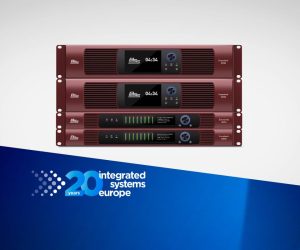
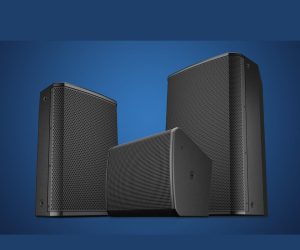
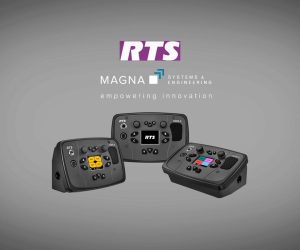
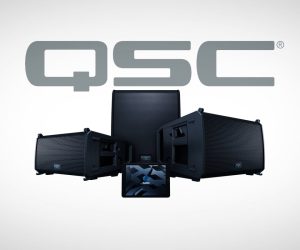
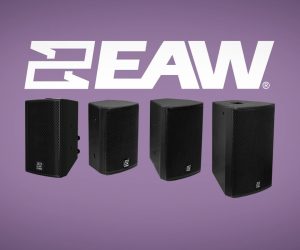
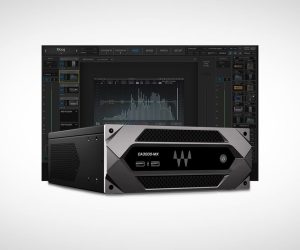
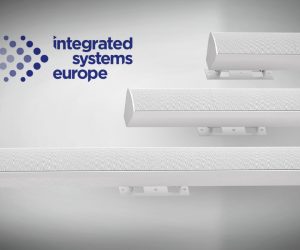
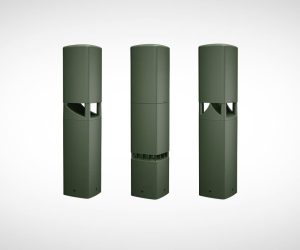
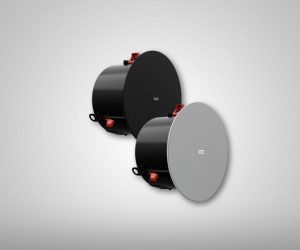
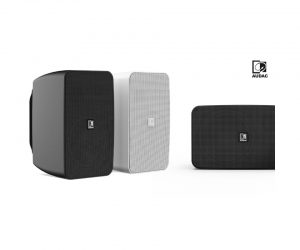
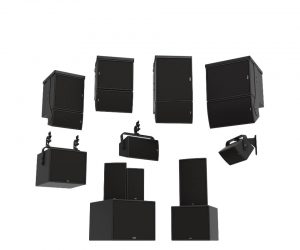
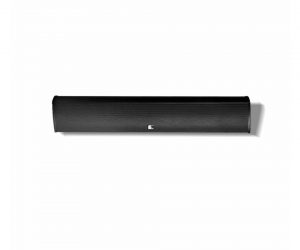


RESPONSES